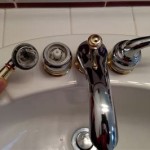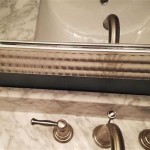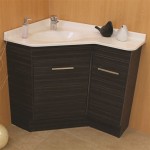Bathroom Fan: A Crucial Tool in Preventing Mold Growth
Mold growth in bathrooms is a common and persistent problem in residential and commercial buildings. Bathrooms, by their very nature, are environments conducive to mold proliferation due to the consistent presence of moisture, warmth, and organic matter. Controlling moisture levels is paramount in preventing mold, and bathroom fans play a critical role in achieving this goal. This article explores the function of bathroom fans, their importance in mold prevention, factors to consider when selecting a fan, and best practices for fan usage and maintenance.
Mold requires specific conditions to thrive, primarily moisture, a food source (such as drywall, wood, or soap scum), and a moderate temperature range. Bathrooms frequently provide all three. Showers and baths generate significant amounts of steam and humidity. Even routine activities like handwashing contribute to increased moisture levels. Without proper ventilation, this moisture condenses on surfaces, creating a favorable environment for mold spores to germinate and grow. Mold can cause a variety of health problems, including allergic reactions, respiratory issues, and skin irritation. Furthermore, mold growth can damage building materials, leading to costly repairs and negatively impacting property value.
The Role of Bathroom Fans in Moisture Control
The primary function of a bathroom fan is to exhaust moist air from the bathroom, thereby reducing humidity levels. By removing the excess moisture, the fan helps to prevent condensation on walls, ceilings, and other surfaces. This, in turn, inhibits the growth of mold. Bathroom fans work by drawing air from the bathroom and venting it to the outside of the building. The effectiveness of a fan depends on several factors, including its airflow capacity, the size of the bathroom, and the proper installation and maintenance of the fan and ductwork.
A properly functioning bathroom fan can significantly reduce the risk of mold growth. It helps to maintain a dry environment, making it difficult for mold spores to find the moisture they need to thrive. In addition to preventing mold, a bathroom fan can also improve air quality by removing odors and pollutants. This creates a more comfortable and healthier environment for occupants.
The absence of a bathroom fan or a poorly functioning fan can lead to a number of problems. High humidity levels can cause paint to peel, wallpaper to loosen, and wood to warp. Mold growth can also damage these materials, requiring costly repairs. Furthermore, excessive moisture can create a breeding ground for dust mites and other allergens, exacerbating respiratory problems and allergies.
Selecting the Right Bathroom Fan
Choosing the right bathroom fan is crucial for effective moisture control and mold prevention. Several factors should be considered when selecting a fan, including the size of the bathroom, the fan's airflow capacity (measured in cubic feet per minute or CFM), the noise level of the fan, and its energy efficiency.
The size of the bathroom is the most important factor in determining the appropriate CFM rating for the fan. A general rule of thumb is to choose a fan with a CFM rating that is equal to or greater than the square footage of the bathroom. For example, a 50-square-foot bathroom would require a fan with a CFM rating of at least 50. For bathrooms larger than 100 square feet, a more precise calculation may be necessary, taking into account the number of fixtures (such as showers, toilets, and sinks) in the bathroom. The Home Ventilating Institute (HVI) provides guidelines and calculators to help determine the appropriate CFM rating for different bathroom configurations.
Noise level is another important consideration, especially for bathrooms located near bedrooms or other living areas. The noise level of a bathroom fan is measured in sones. A lower sone rating indicates a quieter fan. Many modern bathroom fans are designed to operate quietly, with sone ratings as low as 0.5 or 1.0. Choosing a quiet fan can help to minimize noise pollution and create a more pleasant bathroom environment.
Energy efficiency is also an important factor to consider, as bathroom fans can consume a significant amount of energy over time. Look for fans that are Energy Star certified, as these models meet stringent energy efficiency standards. Energy Star certified fans typically use less energy than standard models, which can save money on energy bills and reduce environmental impact. Some fans also include features such as timers and humidity sensors, which can further improve energy efficiency by automatically turning the fan on and off as needed.
In addition to these factors, it is also important to consider the fan's features and design. Some fans include built-in lights, which can provide additional illumination in the bathroom. Other fans include heaters, which can help to warm the bathroom quickly on cold days. The design of the fan should also complement the overall aesthetic of the bathroom.
Proper Installation, Usage, and Maintenance for Optimal Performance
Even the best bathroom fan will not be effective if it is not installed properly. Proper installation is crucial for ensuring that the fan operates efficiently and effectively. It is recommended to hire a qualified electrician or contractor to install the fan, as this will help to ensure that it is installed correctly and safely.
One of the most important aspects of fan installation is ensuring that the fan is properly vented to the outside of the building. The vent duct should be as short and straight as possible, and it should be insulated to prevent condensation. The vent duct should also be equipped with a backdraft damper to prevent outside air from entering the bathroom when the fan is not in use. Improperly vented fans can recirculate moist air back into the bathroom, which can actually worsen mold problems.
Correct fan usage is equally important. The fan should be turned on before taking a shower or bath and left running for at least 20 minutes after showering to allow sufficient time for the moisture to be exhausted. For bathrooms with high humidity levels, it may be necessary to run the fan for a longer period of time. Utilizing a timer feature can automate this process and ensure the fan runs long enough after the shower has ended. Some newer fan models incorporate humidity sensors, which automatically activate the fan when humidity levels rise above a certain threshold.
Regular maintenance is also essential for ensuring that the fan continues to operate effectively. The fan should be cleaned regularly to remove dust and debris, which can accumulate on the fan blades and motor. A dirty fan will operate less efficiently and may eventually fail. The fan's vent duct should also be inspected periodically to ensure that it is not blocked or damaged. Any blockages or damage should be repaired promptly to maintain proper ventilation.
In addition to cleaning the fan and ductwork, it is also important to inspect the bathroom for signs of mold growth. Any mold should be cleaned promptly to prevent it from spreading. A variety of mold removal products are available at hardware stores and home improvement centers. When cleaning mold, it is important to wear protective gear, such as gloves and a mask, to avoid inhaling mold spores.
Consider a comprehensive approach to mold prevention. Address any water leaks promptly. Leaky faucets, pipes, or roofs can contribute to excessive moisture levels in the bathroom. Improve overall ventilation by opening windows and doors when possible. This will help to circulate fresh air and reduce humidity levels. Utilize dehumidifiers in bathrooms with consistently high humidity levels. Dehumidifiers can remove excess moisture from the air, further reducing the risk of mold growth.
Bathroom fans are a critical component of a comprehensive mold prevention strategy. By effectively removing moisture from the bathroom, they help to create an environment that is less conducive to mold growth. Selecting the right fan, ensuring proper installation, and maintaining the fan regularly are all essential steps in preventing mold and maintaining a healthy bathroom environment.

Long Term Bathroom Mold Prevention Environix

Long Term Bathroom Mold Prevention Environix

Long Term Bathroom Mold Prevention Environix

How To Prevent Mold In A Bathroom Without Fan Home Efficiency Guide

Why Is Mold Growing Around My Bathroom Exhaust Fan
:max_bytes(150000):strip_icc()/tricks-keep-bathroom-mold-free-326859-01-85c476c35ec9431aab5405e5eaf48a51.jpg?strip=all)
10 Tricks To Prevent Mold In Your Bathroom
.jpg?strip=all)
How To Prevent Mold In Your Bathroom Brownie S Septic Plumbing

Stopping Bathroom Mould

How To Prevent Condensation And Mould Problems This Winter Help Extractor Fan World

Proper Home Ventilation To Prevent Mold Growth Water Damage Fire Smoke Restoration And Removal Southeast Michigan Asd Waterworks
Related Posts







